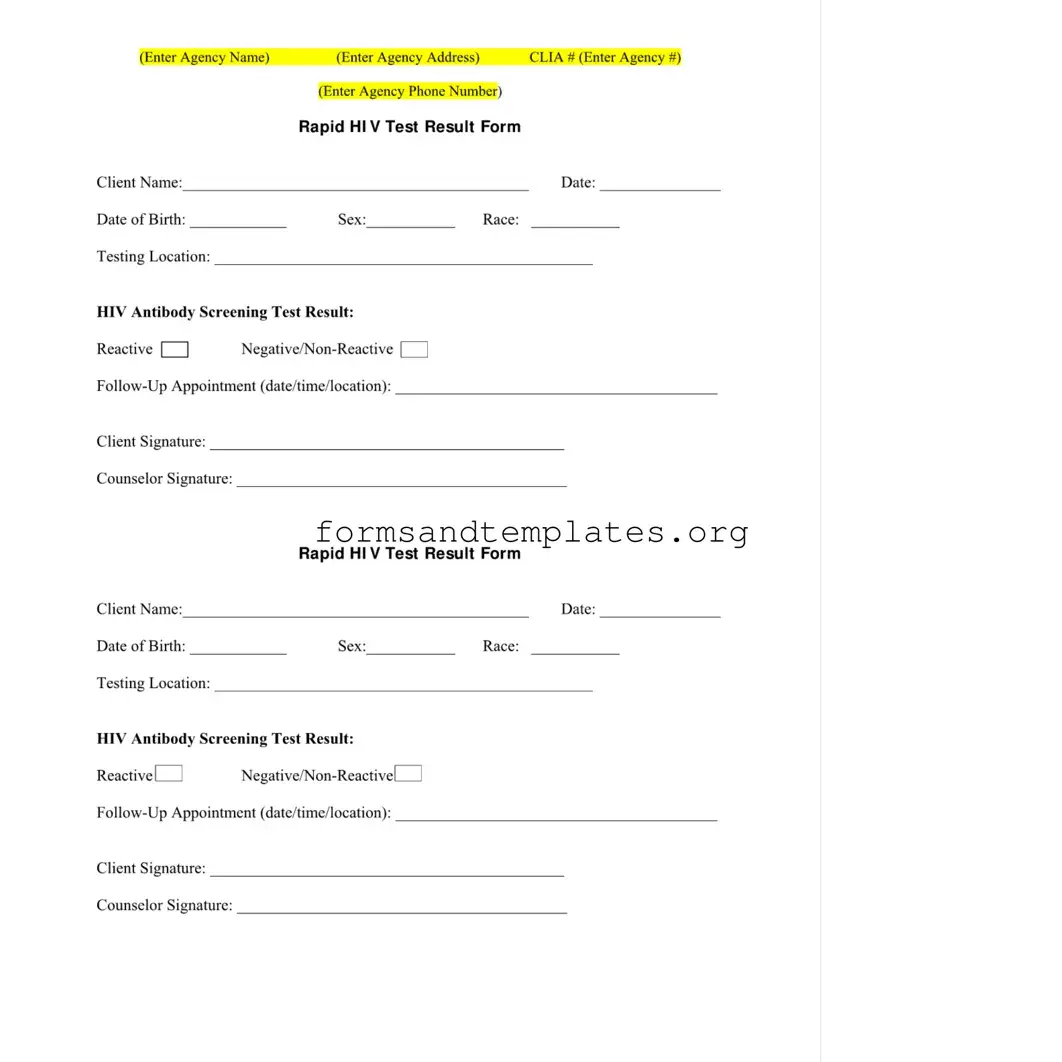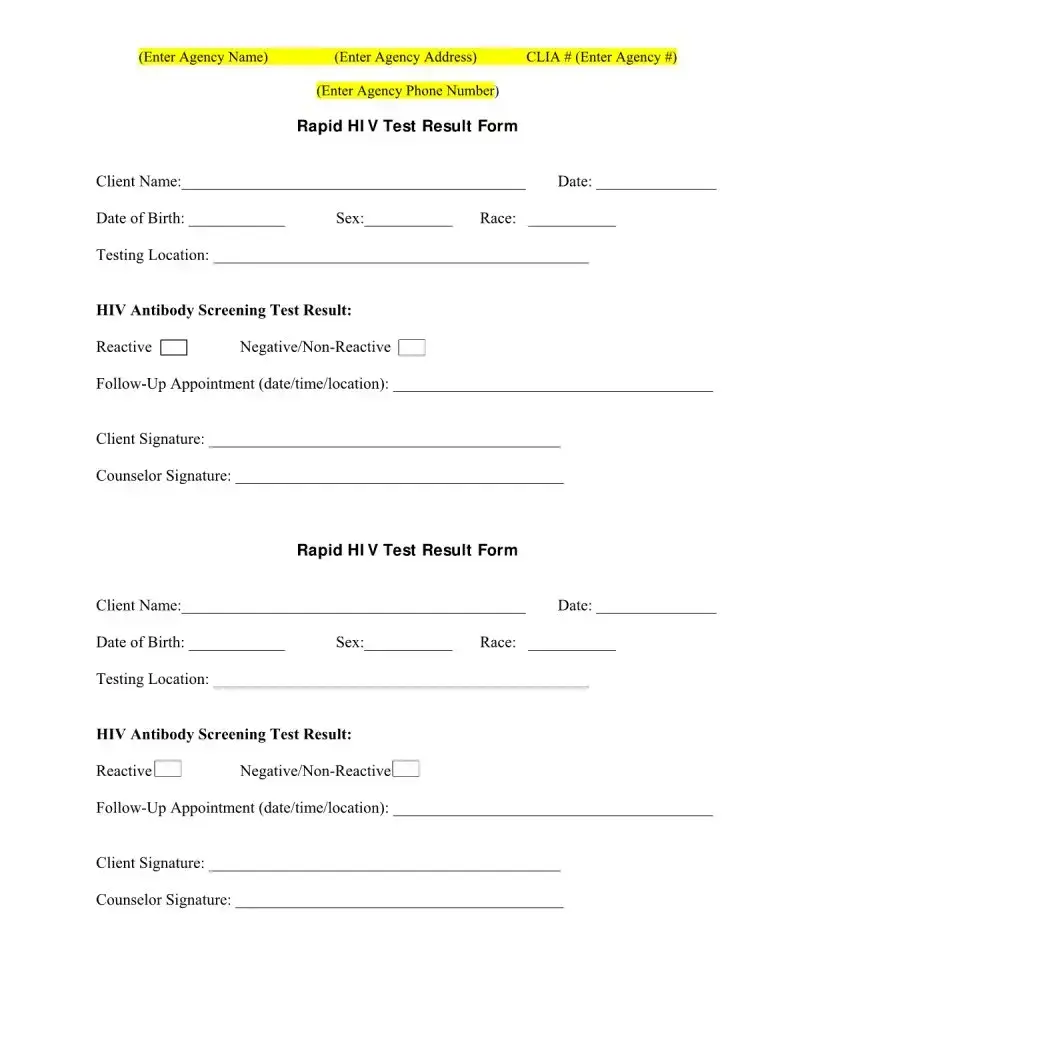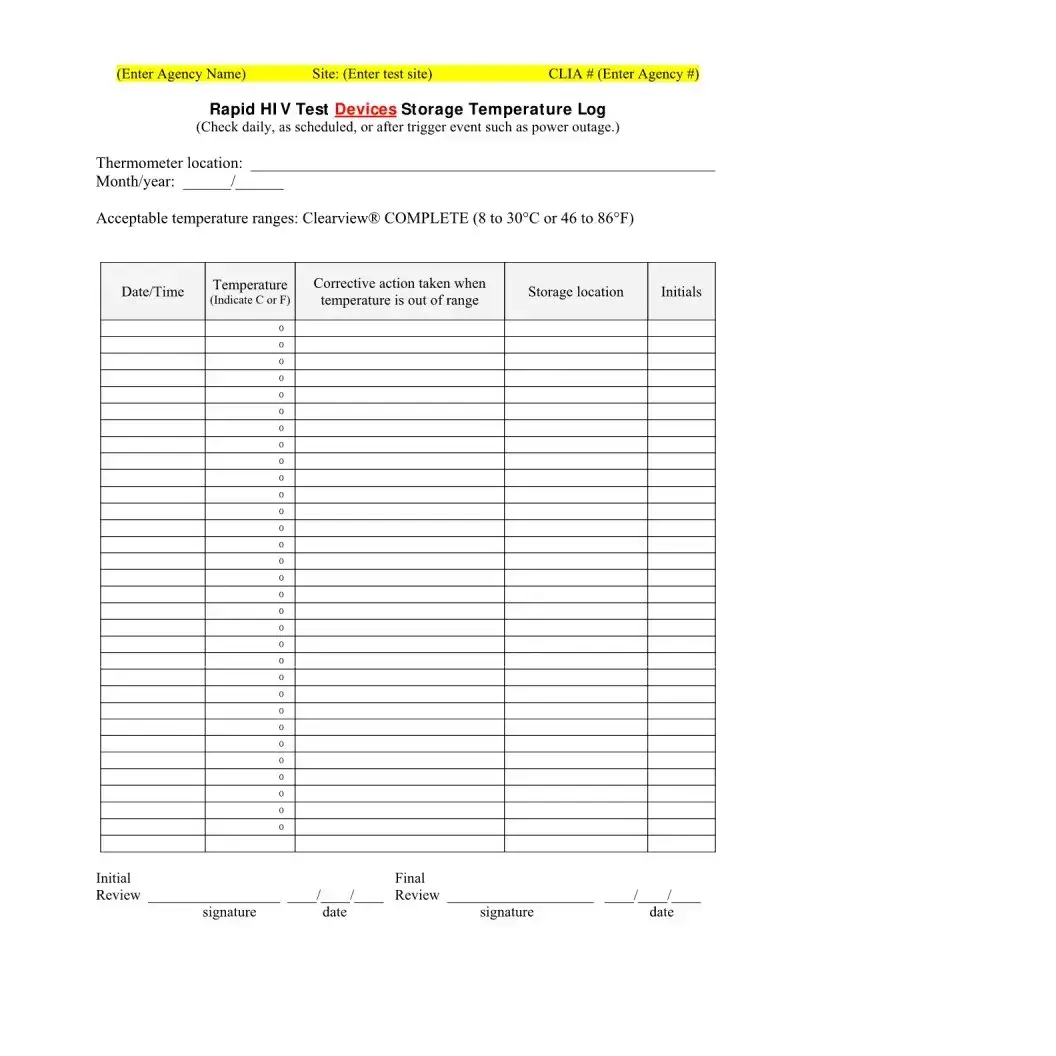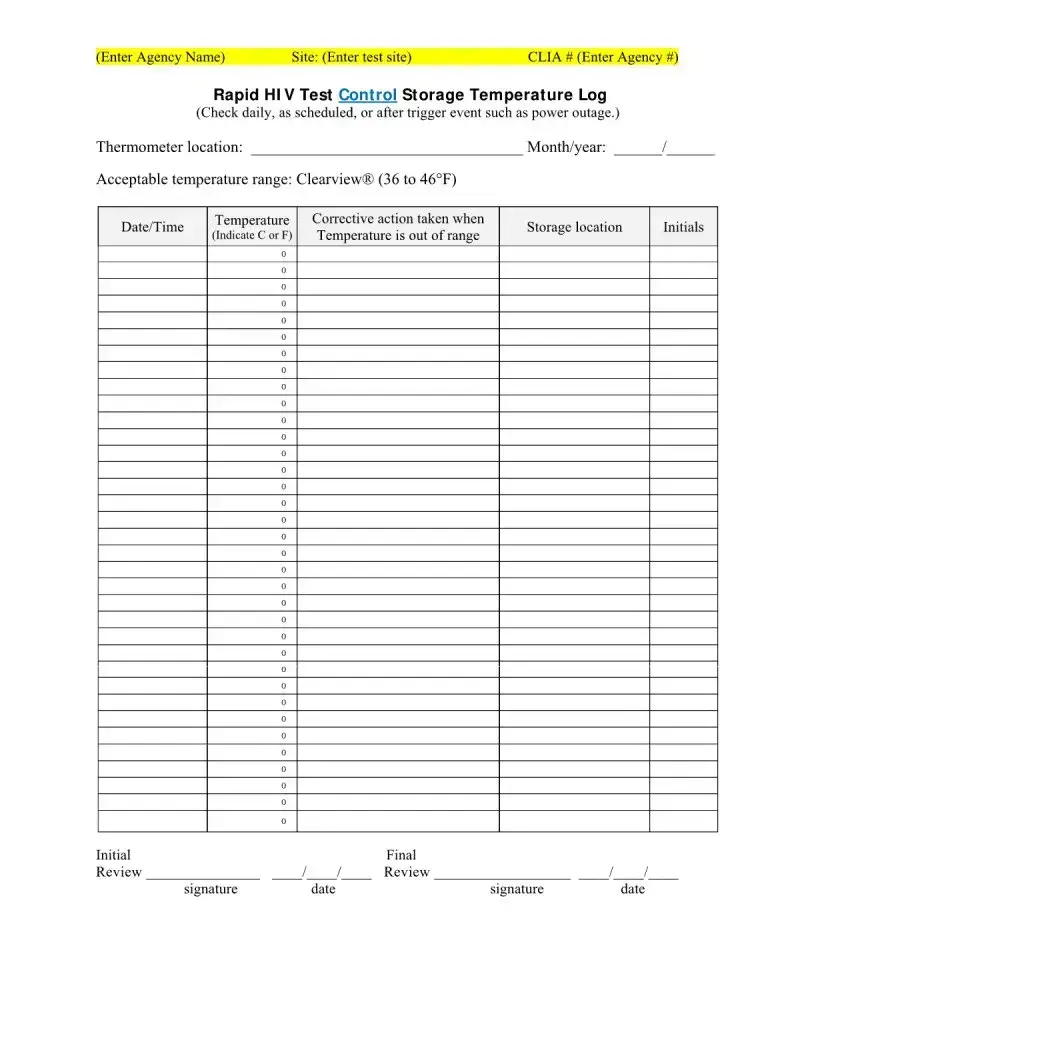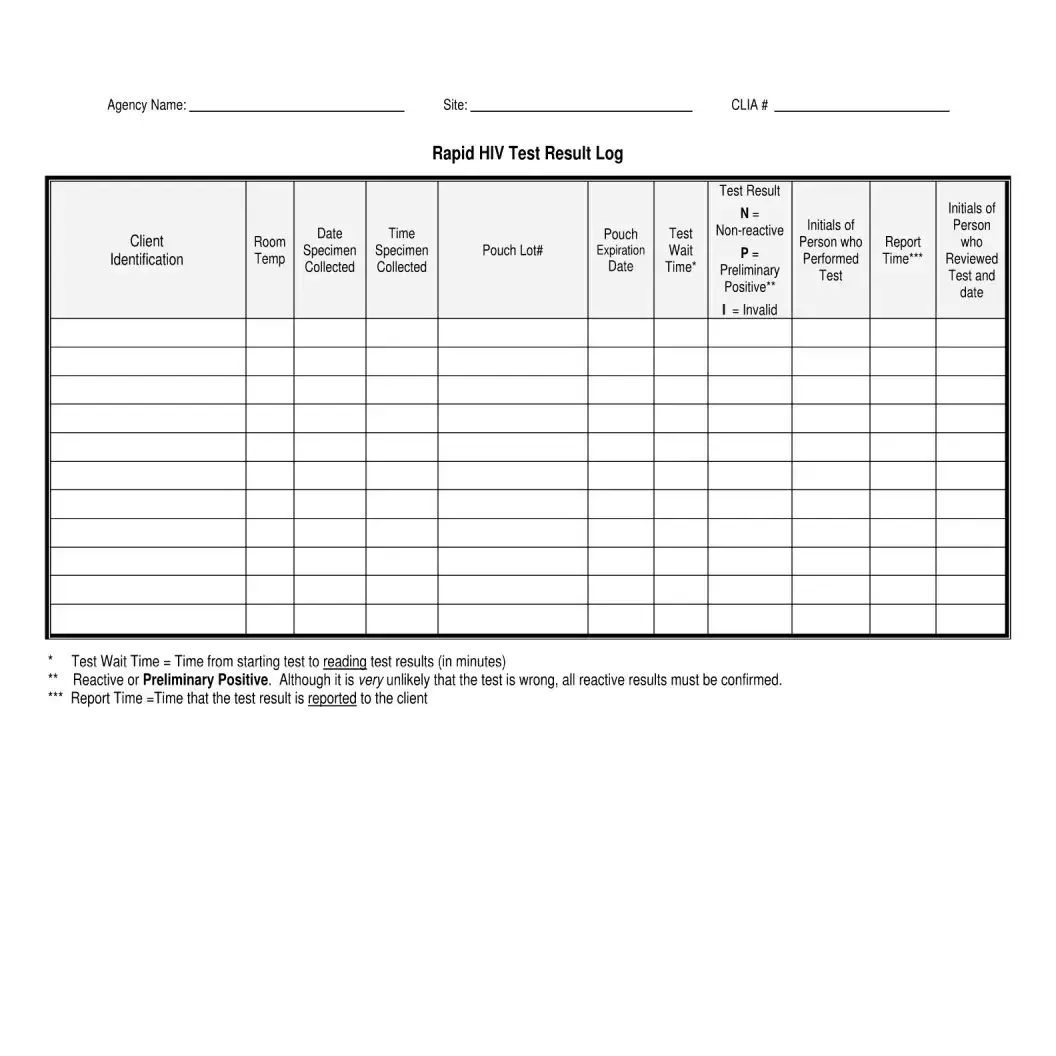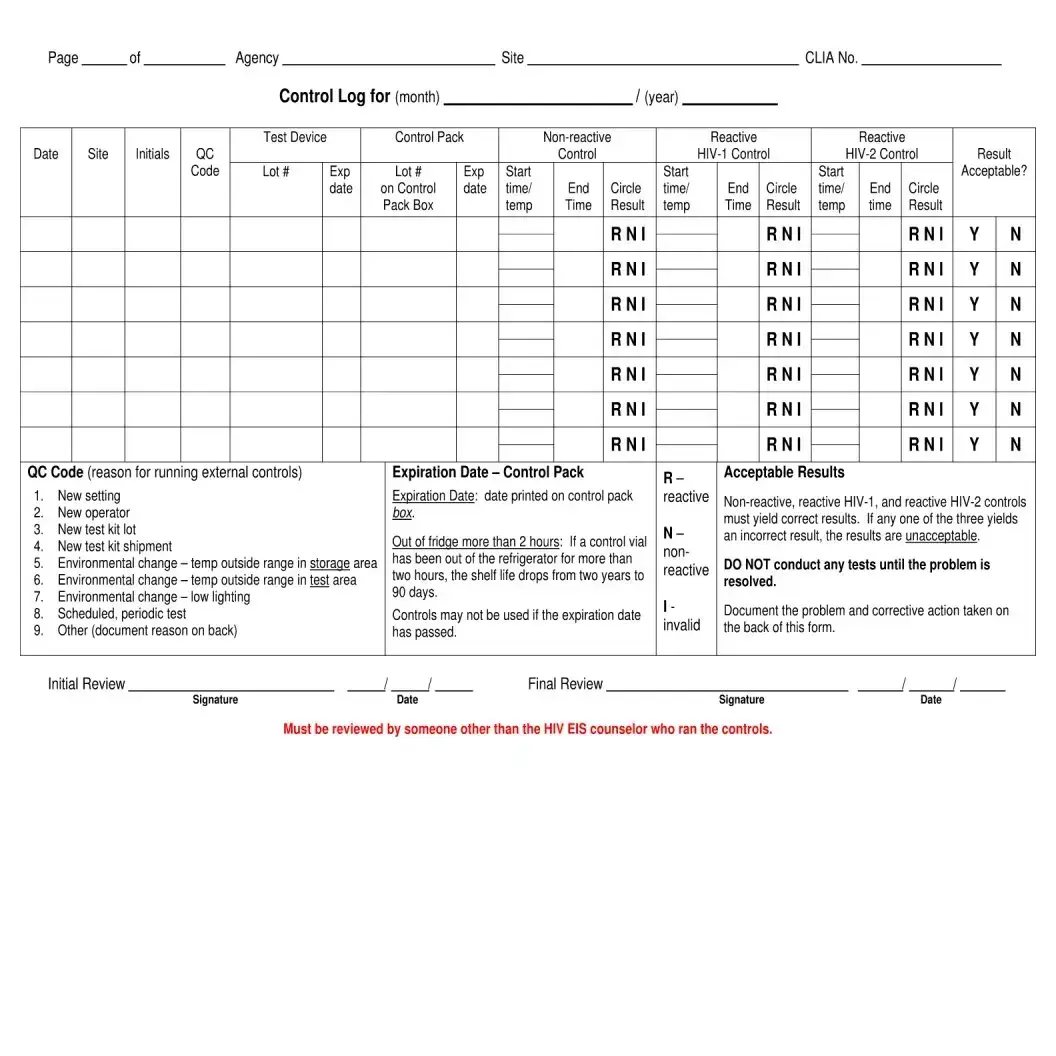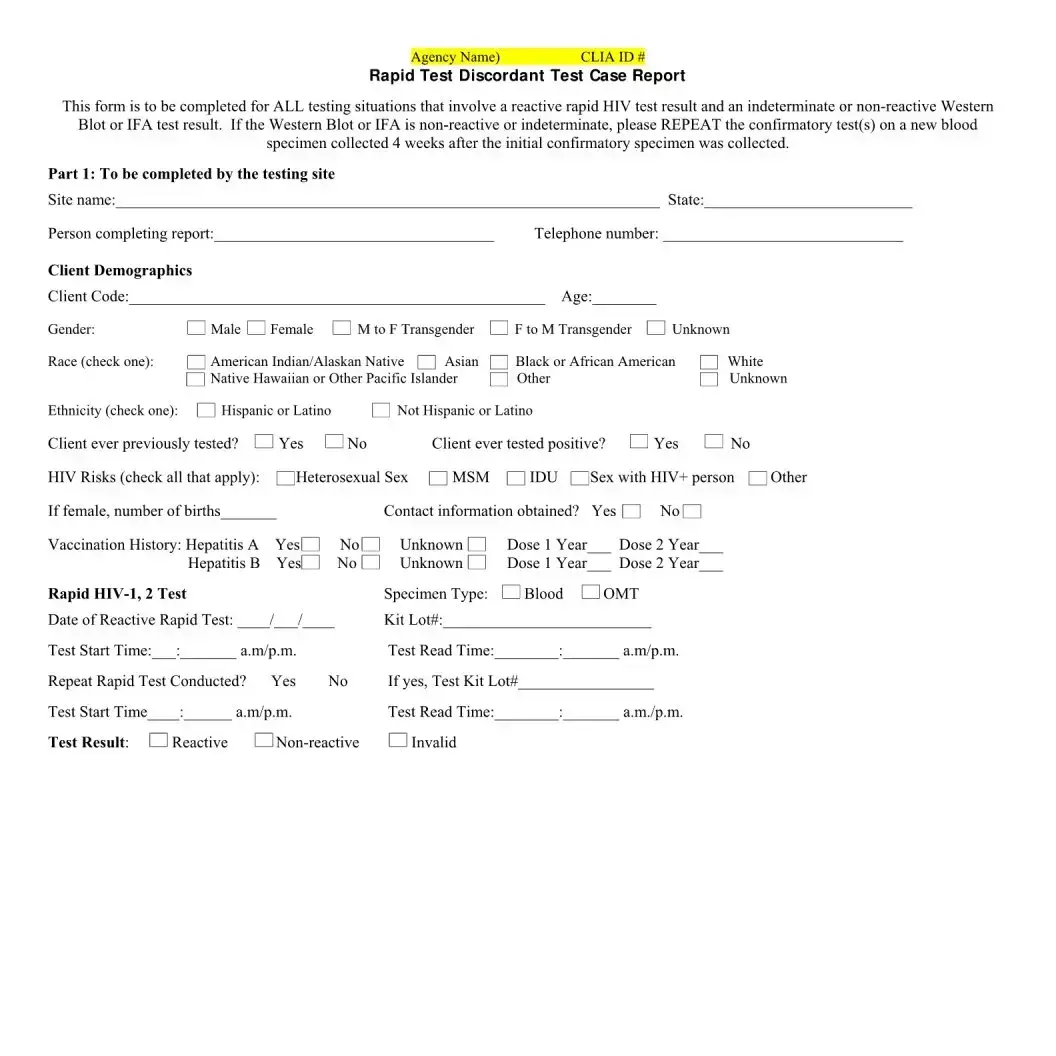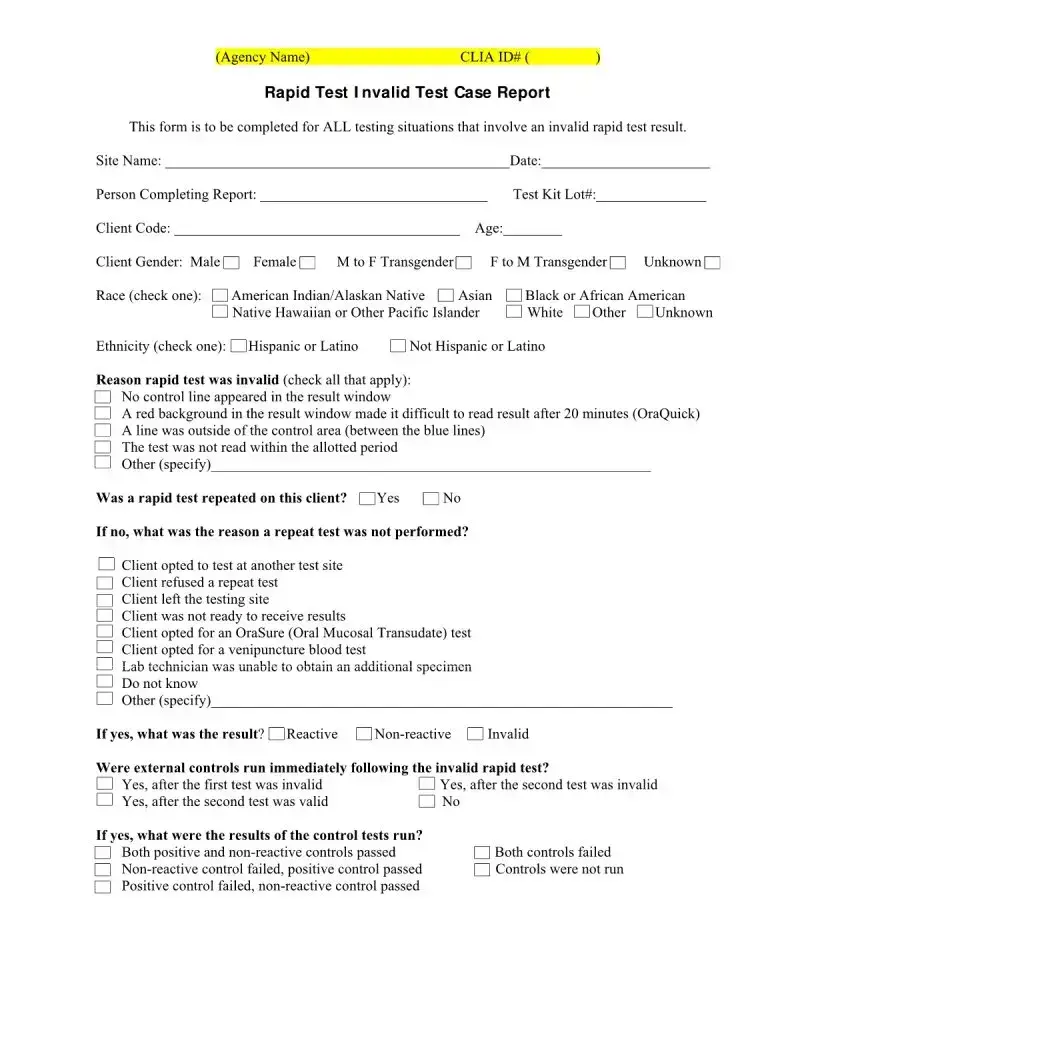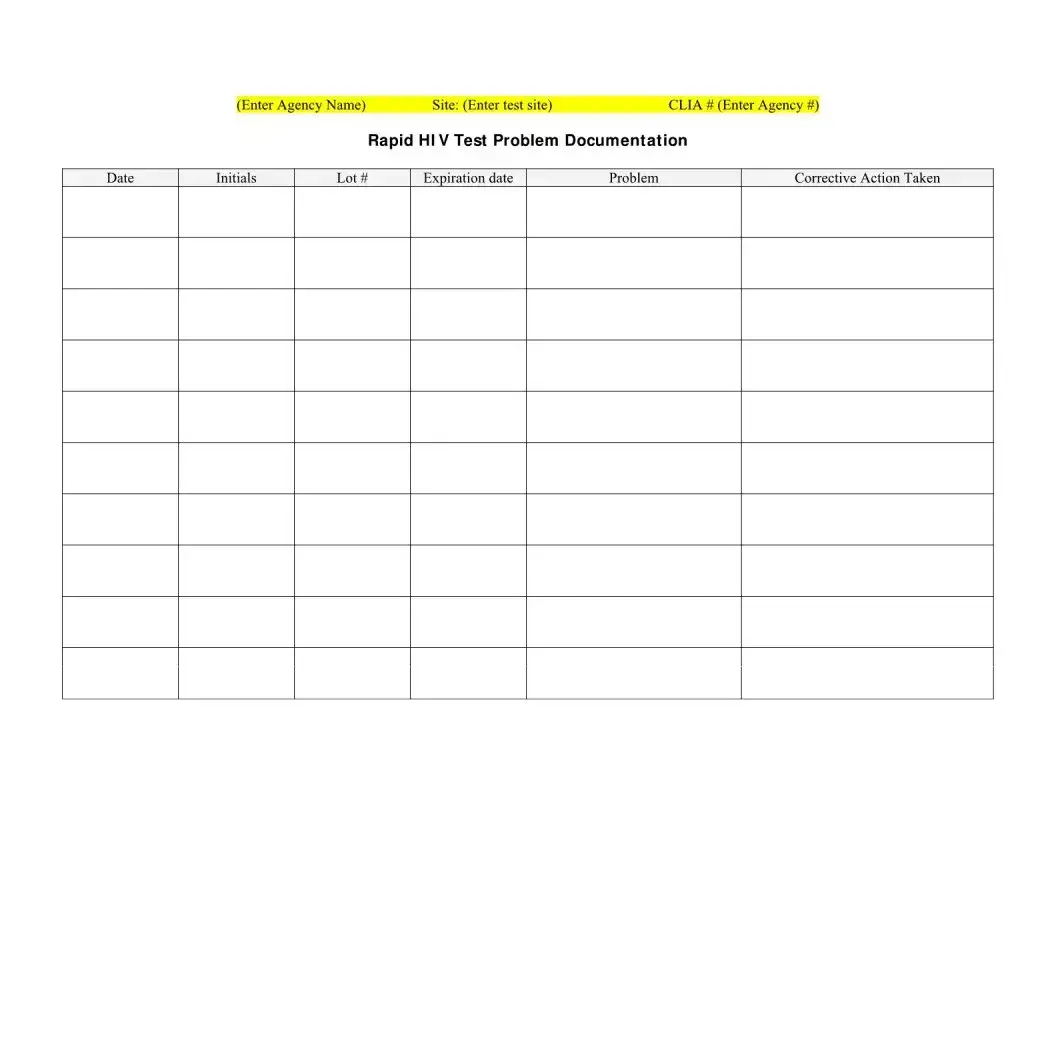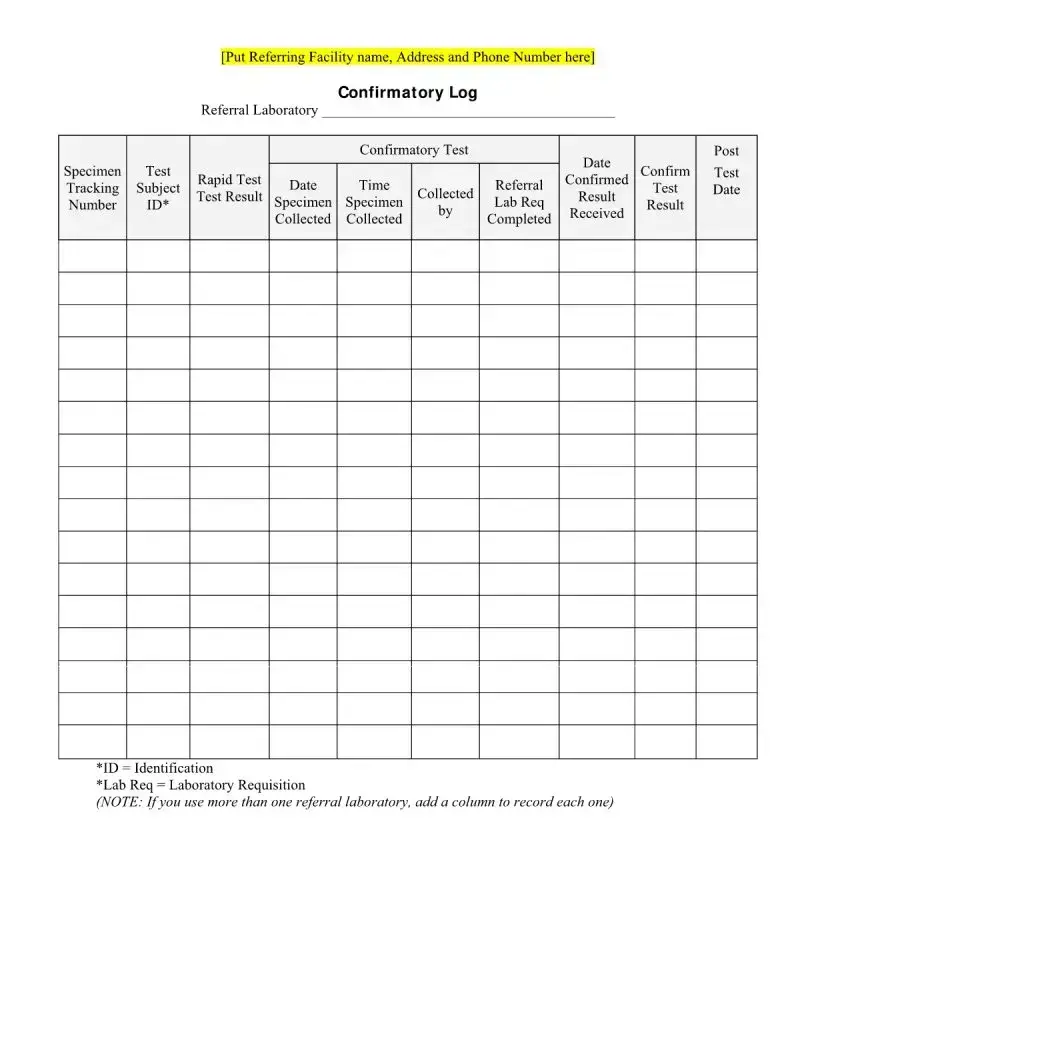The Negative HIV Test form is an essential document that plays a crucial role in the process of HIV testing. This form captures vital information about the client, including their name, date of birth, race, and the location where the testing occurs. It also provides the results of the HIV antibody screening test, indicating whether the result is reactive or negative/non-reactive. Additionally, the form includes spaces for both the client and counselor signatures, ensuring accountability and consent. A follow-up appointment section allows for scheduling any necessary future consultations. Furthermore, the form contains logs for the storage temperature of rapid HIV test devices and controls, which are critical for maintaining the integrity of the testing process. These logs require daily checks and corrective actions if temperatures fall outside acceptable ranges. Overall, the Negative HIV Test form is designed to ensure accurate testing, proper documentation, and the health and safety of clients undergoing HIV testing.
